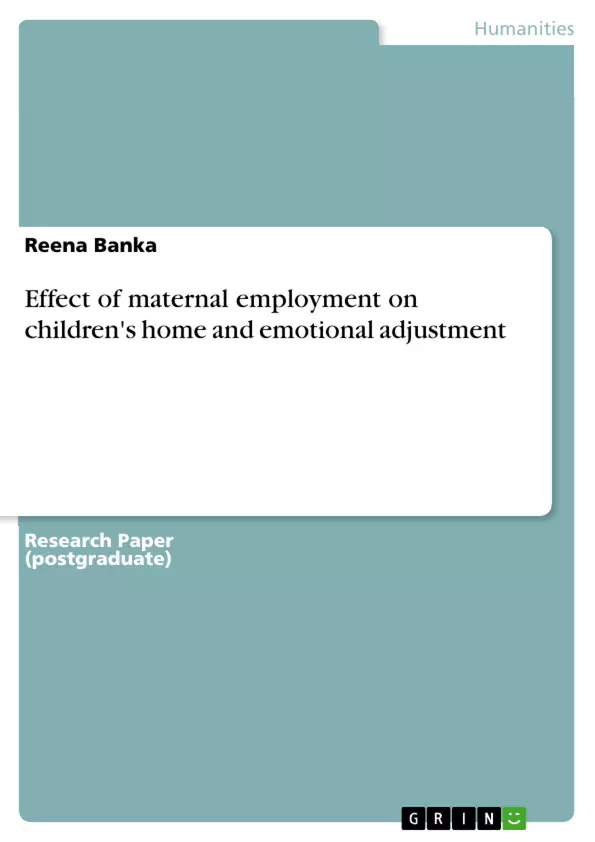An incidental cum purposive sample of 100 school students (age range 13 to 15 years) was selected to conduct the study showing the effect of maternal employment on their children’s home and emotional adjustment level. The important research tool used was HSAI(High School Adjustment Inventory). The findings on the whole indicate that the children of working mothers (CWMs) exhibit better home adjustment than the children of non-working mothers (CNWMs) and there was no significant difference between the CWMs and CNWMs on the measure of emotional adjustment.
Inhaltsverzeichnis (Table of Contents)
- ABSTRACT
- INTRODUCTION
- PURPOSE
- HYPOTHESIS
- METHOD
- Sample
- Instrument
- RESULTS AND DISCUSSION
- TABLE-1: Mean Scores of the Children of WMs and NWMs on the measure of Home Adjustment
- TABLE-2: Mean Scores of the Children of WMs and NWMs on the measure of Emotional Adjustment
- REFERENCES
Zielsetzung und Themenschwerpunkte (Objectives and Key Themes)
This study investigates the impact of maternal employment on children's home and emotional adjustment levels. It compares the adjustment levels of children from working mothers (CWMs) to those from non-working mothers (CNWMs), aiming to shed light on the effects of maternal employment on children's overall well-being.
- Influence of maternal employment on children's home adjustment
- Impact of maternal employment on children's emotional adjustment
- Comparison of adjustment levels between CWMs and CNWMs
- Examination of the role of maternal employment in shaping children's self-reliance and decision-making abilities
- Assessment of potential role conflict experienced by working mothers and its implications for their children's development
Zusammenfassung der Kapitel (Chapter Summaries)
The study starts with an introduction highlighting the growing trend of working women and the conflicting societal expectations surrounding this role, particularly for mothers. It then presents the research objective and hypotheses, focusing on comparing the home and emotional adjustment levels of CWMs and CNWMs. The methodology details the sample selection, the instrument used (HSAI), and the statistical analysis applied. The results section presents the mean scores and t-ratios obtained for both home and emotional adjustment, revealing that CWMs exhibit better home adjustment but are emotionally less adjusted than CNWMs. The discussion section interprets these findings, suggesting that the absence of the mother during times of emotional need might contribute to the observed difference in emotional adjustment. The study also acknowledges that factors like fathers' involvement in household tasks and childcare can significantly impact the outcomes of maternal employment on children's well-being.
Schlüsselwörter (Keywords)
The key concepts explored in this study include maternal employment, children's home adjustment, children's emotional adjustment, role conflict, self-reliance, decision-making abilities, and the impact of parental involvement on children's well-being.
- Quote paper
- Reena Banka (Author), 2007, Effect of maternal employment on children's home and emotional adjustment, Munich, GRIN Verlag, https://www.grin.com/document/142630



